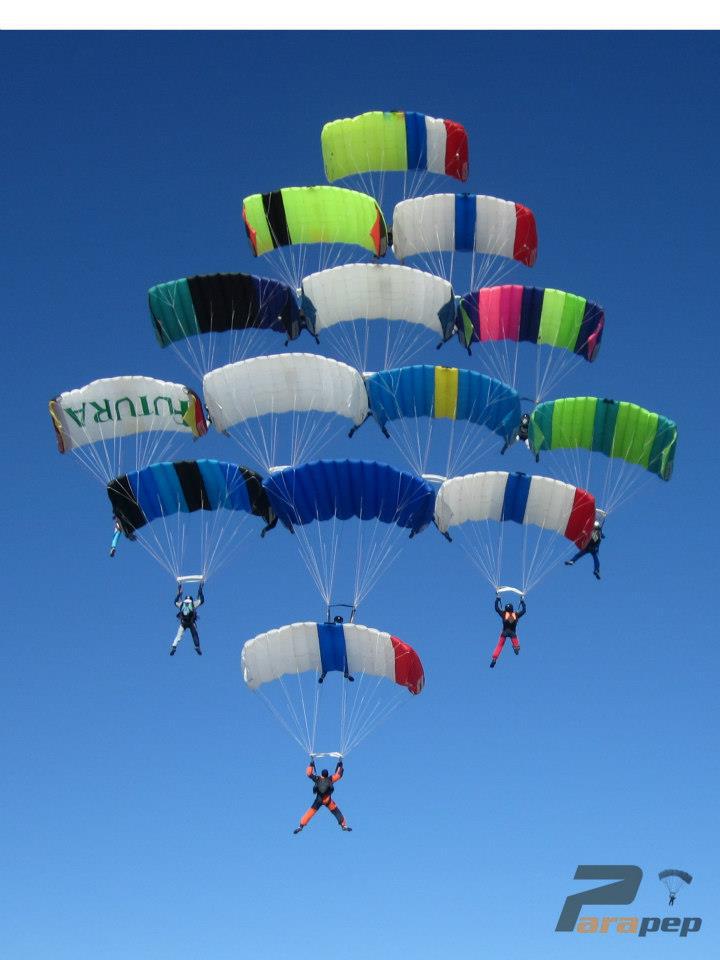Recommended Posts
BIGUN 1,062
QuotePreviously flying a 260 Navigator, Flying a 230 when I started to get injuries.
Please talk with your Instructors regarding the different flare characteristics of the Navigator and the type of 230 you're now flying. There is a difference.
Will Do ![]()
Orange1 0
QuotePLF with feet shoulder's width apart...but hard to work on PLF's now with one good leg..lol.
I was taught to PLF with feet (and knees) tightly together... and I'm sure I'm not the only jumper who has PLF'd landings because at the time I only had "one good leg"...
AFFI 0
QuoteExit Weight: 218lbs.
Canopy: Previously flying a 260 Navigator, Flying a 230 when I started to get injuries.
Winds: usually about 5-10mph.
First off I wish you a speedy and good recovery, don’t rush it, allow your body to heal and rehab properly by listening to your professional health providers. Sounds like a pretty serious injury.
Secondly, learning to safely land a canopy is amongst the more critical and difficult aspects of skydiving to reach a level of proficiency at, so take your time and by listening to your professional skydiving instructors who are working directly with you.
It is nearly totally impossible to give effective counsel concerning flaring for landings without being there with you.
So you will receive advice from
well intentioned skydivers but it is the instructors working directly with you who you really need to focus on for guidance.
Expect them to put you back up on a larger canopy, that way you can have slower landings while you learn. Don't get in a hurry, you have the rest of your life to skydive, the trick is to maximize your healthiness so you can make more jumps before the dreaded day comes whey you have to leave the sport, which is inevitable.
So stay safe, EPs, learn when to stay on the ground when the winds are outside a conservative guideline and most of all - Cherish the moments you get to participate in this sport, the people are wonderful...
Skydiving Priorities: 1) Open Canopy. 2) Land Safely. 3) Don’t hurt anyone. 4) Repeat…
QuoteQuoteFlaring too High: I have done this on 2 occassions and have brought my toggles back up and felt the canopy surge forward...needless to say it was a very uncomfortable feeling before I hit the ground. Won't be doing that again.
Just curious: Did your training cover this area?
I think nearly everyone is told to hold the flare, but when you're in the situation....no time to think about it and our instincts are bad.
To the original poster - there are two good articles on the front page of DZ that talk about the flare height and other issues of landing. And Scott and Brian's courses include video analysis, though even without them having someone tape your landings will allow more people to advise you.
Personally, I have had more of a problem with late flaring where I flying into the ground, esp on the low wind days.
rygon 0
QuoteQuotePLF with feet shoulder's width apart...but hard to work on PLF's now with one good leg..lol.
I was taught to PLF with feet (and knees) tightly together... and I'm sure I'm not the only jumper who has PLF'd landings because at the time I only had "one good leg"...
so was I. Knees together and bent, pointing slightly to one side (at around 50ft) hold it there. When you land this atoumatically removes a lot of the energy into you legs (acting as shock absorbers due to the bent knees) and by having the legs to the side a bit , it allows you to roll onto the side of you body
Ether 0
Good luck!
Just had one really good jump (3 days before my birthday no less..lol.) that I just initiated all my landing procedures a bit too late and/or incorrectly and will just have to learn from it.
*Note*... I have been trained by some of the best instructors out there, but in the end....while in freefall and under canopy...the decisions I make at the time are mine...whether they be the right one's at the time or not. I take responsibility for myself and my mistakes in this sport.
Ether 0
QuoteJust had one really good jump (3 days before my birthday no less..lol.)
I understand your frustration.. see my avatar for the object that snuck up on me to give me some canopy control lessons
But it sounds like you're on the right track.. keep at it! And happy birthday!
BIGUN 1,062
QuoteKnees together and bent, pointing slightly to one side (at around 50ft) hold it there.
WRONG I don't know where you got this. but you do not twist your feet to one side at 50 feet. Go back and talk to your Instructors and knock out 50 on the way.
Baksteen 84
Isn't there a kinda dangerous problem with this method? How do you know to time your flare when you land off? Not ragging on you, just curious, and slighty worried...
~mom




Like the saying goes: "you can lead a horse to water, but you can't make them drink it ...correctly"...lol
Share this post
Link to post
Share on other sites